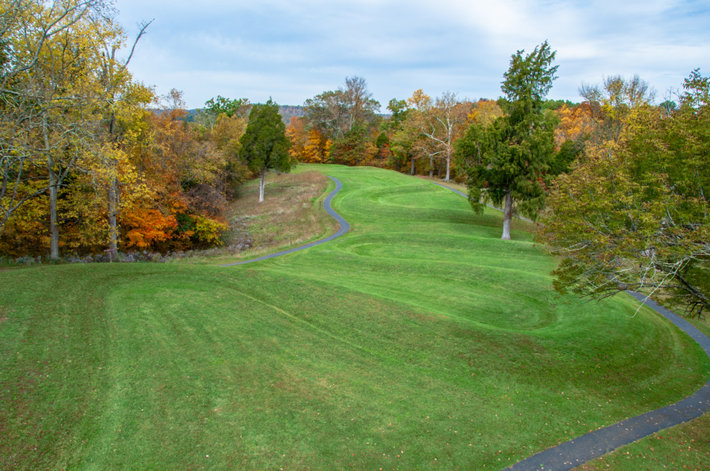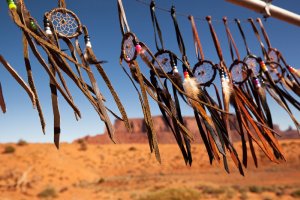Throughout the United States, a battle is taking place for continued access to sacred sites and their protection in perpetuity, creating new focal points of mountains in Arizona, ancient walls in Ohio and rivers in North Dakota.

The battle, in the form of protests and lawsuits, is aimed at deterring developers, confronting government agencies, and even curtailing the activities of other spiritual groups with conflicting agendas. They are committed to preserving the physical integrity of these spaces, which is directly linked to their spiritual significance.
Serpent Mound along Ohio Brush Creek, near Pebbles, Ohio, is one example, with its sculptural serpentine wall made of earth and covered in grass growth. It was created by members of the Eastern Shawnee Tribe of Oklahoma thousands of years ago. On June 21, 2021—the summer solstice—Shawnee Tribe Chief Glenna Wallace led a group of visitors along the Serpent Mound and told crowds about the history of the site, her tribe’s resonant connection to it, and the 19th-century policies that exiled tribe members from the area.
“We presented programs to let people know that the tribes still exist, the people still exist,” Wallace told Religion News Service. “We are still alive, we are still active. Those are still spiritual places for us.”
Serpent Mound, in southern Ohio, is the landscape for some 70 natural-materials creations that were built centuries ago by the indigenous Adena and Hopewell cultures. These earthworks remain spiritual touchstones for tribal descendants, including the Shawnee, Eastern Shawnee, Miami and Delaware people who were forced to leave their homes by white settlers in the 1800s. Some of these creations were constructed as burial mounds. Others were used for rituals or served as sights for observation of the stars.
The federal government, with its eyes often on sacred sites for development purposes, is making efforts to protect nine Ohio earthworks including Serpent Mound by having them listed as UNESCO World Heritage locations.
In 2021, based on information provided by Wallace and Chief Ben Barnes of the Shawnee Tribe, the nonprofit Ohio History Connection began restricting groups from gathering at the mound.
John Low, director of the Newark Earthworks Center, an interdisciplinary group at Ohio State University that studies native American cultures, emphasizes that visitors to such holy places as Serpent Mound must demonstrate respect for the sites’ spiritual nature. Low, who is a citizen of the Pokagon Band of Potawatomi Indians, declares that the mounds are no less sacred than a church or a mosque.
“The earth which they are built upon,” he says, “was sacred, is sacred, will always be sacred.”
______________
The Church of Scientology publishes this blog to help create a better understanding of the freedom of religion and belief and provide news on religious freedom and issues affecting this freedom around the world.
The Founder of the Scientology religion is L. Ron Hubbard and Mr. David Miscavige is the religion’s ecclesiastical leader.
For more information, visit the Scientology website or the Scientology TV network.


